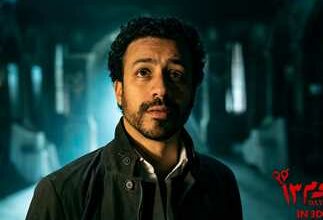There aren’t many computer-animation films that could make a coming-of-age tale featuring cowboys, spacemen, potato-heads, and a Barbie doll and get away with it. Then again, there aren’t many animation films that left such a mark on the minds of an entire generation the way Toy Story did.
After all the adventures these toys have been through over the last 15 years, and after all we’ve been through with them in their two previous feature films, you just want to sit in the movie theater and enjoy the third part of the trilogy. Toy Story 3–the latest 3D addition to the beloved series–will only add to these warm ‘n’ fuzzies.
The movie begins with Andy, the owner of Woody, Buzz and Co., who is growing up and getting ready to hit the road for college. His sister is taking over his room and his toys are bound for the attic, but a series of unfortunate events leave the gang of toys on the sidewalk inside a garbage bag. Feeling unwanted, the toys launch a mission to get themselves donated to a preschool, albeit against the wishes of Woody, who remains hung up on his owner and his best buddy Andy.
When the toys arrive in the preschool nursery, they are anxious to do their one and only job: being played with. What they don’t know is that the dolls and toys living in the school–under the command of the ruthless Lot’s ’Huggin’ Bear–are conspiring to have them sent to the toddlers room, where toys are known to be savagely torn, ripped and beaten at the hands of age-inappropriate children.
The new Pixar/Disney flick grossed a phenomenal US$109 million its first three days of screening in the US, pushing the film to the number-one spot at the American Box Office and snatching the second-biggest opening-weekend gross for an animated film.
The first thing that stands out in this film is the introduction of True 3D. The new screening technique has been used in previous work to freak viewers out with incoming arrows and bullets, as in Avatar (2009) and Clash of the Titans (2010). But in this flick, the technique was rightfully installed to enhance the beauty of the feature and allow the audience a wider look into the magic world of Toy Story without overusing the scary element.
Tom Hanks and Tim Allen are back to give voice to the characters, and they deliver as expected. Tim Allen excels at providing a comic foil in the film’s darker moments, as Buzz is reset to his default settings and begins speaking Spanish. He is turned into a Latino lover/spaceman who dances the flamenco and ultimately saves the day.
Michael Keaton (Batman, 1984) joins the cast this time to lend his voice to the role of Ken, the clean-cut, plastic companion of Barbie–another comic character that will even get a laugh from adults with his takes on love and relationships.
The plot explores the transformation from childhood to adulthood, portraying the sad experience of losing interest in one’s childhood–and all that comes with it. The dark, almost scary, mission taken up by the toys to find a new owner for themselves is something every young adult can relate to.
Some toys, unfortunately, just like some children, won’t make it to the happy ending. These misfits are represented in the film by broken, devilish toys, willing to hurt other toys in order to survive. It’s this deeper, darker storyline–which is well-written and smartly integrated–that pushes the comic flick to its dramatic, almost tragic, limit.
The film will be enjoyed by both new arrivals to the series and nostalgic, twenty-something adults who grew up watching the first two films.
These particular toys will never be lost or outgrown–by this or any other generation.




